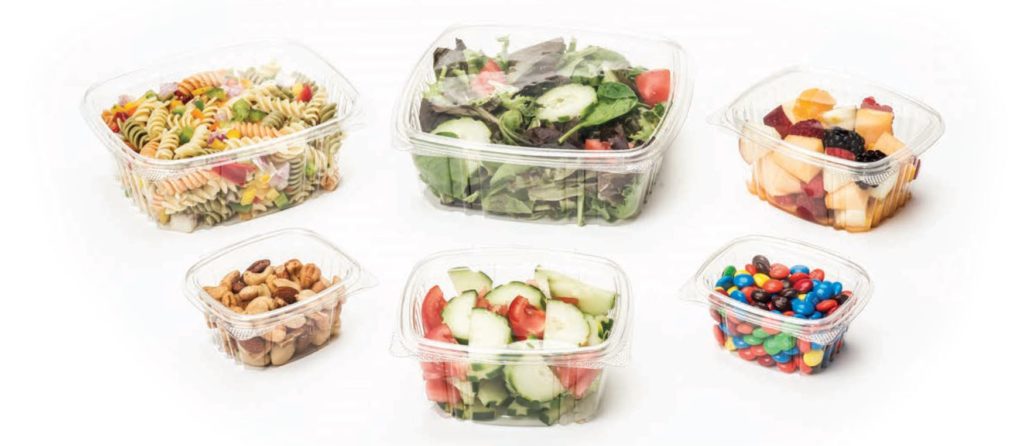APET vs. OPS
The Hard, Brittle Truth Behind OPS
Transparent food packaging is becoming a driving force in a faster purchasing decisions. So, when it comes to OPS and APET, the difference is clear. OPS is an oriented polystyrene that can be formed into plastic. This substrate is a cheaper option, but this low-priced material can only go so far. APET is anamorphous polyethylene terephthalate, and is uncompromising, safe, sustainable, and worth the investment. Here are the unparalleled qualities in APET that makes OPS “crack” under pressure.
1 | Unmatched Clarity
There’s nothing more important in food service than authentic food presentation. It benefits both the operator who displays the food item and the consumer who makes the purchasing decision. While OPS is usually made for bakery food items, APET material offers a heightened transparency.
Even with lids, APET is unmatched with superior clarity. You don’t have to confirm that you have Coke or tea, and water or Sprite. Since OPS lids produce haziness, you sometimes can’t help but lift the lid to guarantee that you have the right refreshment. APET on the other hand, is much more transparent where consumers can ensure that they have the right beverage without having to peep through a blurry lid.
2 | Longer Shelf Life
Every food item has an expiration date, and APET is a great candidate for offering a longer shelf life. Its structural integrity serves as a defense against oxygen to prolong the lifespan of a food item. This substrate also works well under cooler temperatures up to -20◦F, safe for a refrigerator or freezer. From transporting the container from one location to the next, consumers can ensure that it’s effective in preserving a food item without caving in or cracking open.
OPS is limited in versatility when it comes to preserving food items at room temperature or in a cooler setting. It’s very brittle and is more likely to shatter. Oxygen can easily seep into a container made from this substrate and cause food spoilage.
3 | Strong and Safe
APET is durable, cut resistant, and uncompromising when handled. OPS tends to be rough around the edges, making it difficult to get along with. As a company that thrives off safety, we recognize that OPS is a risky investment because it is a firm plastic that’s prone to cracking. Brittle substrates like this can challenge your safety, causing scratches and cuts. It leaves behind sharp edges when cracked, which is why it is not a recommended substrate for drinking cups.
4 | #1 Curbside Recyclable
APET is a versatile substrate that is widely accepted by most municipalities curb side recycling programs. Most recycling firms do not accept OPS because it is more difficult to break down and reconstruct. Genpak’s transparent containers are constructed with APET and up to 30% post-consumer recycled content, in our conservational efforts to eliminate waste, and reduce the burden on the environment.
At Genpak, we’re passionate about engineering products that perfectly blend with immediate packaging needs. These options can be found in our Hinged Deli Containers, Hinged Bakery Containers, Supermarket Containers, Hinged Food Containers, and Drink Cups. We ensure a forerunning spot in markets where APET products are needed.

